Geologic Setting and Controls on Depostion
Paleogeography & Tectonic Setting
Mississippian Paleogeography
|
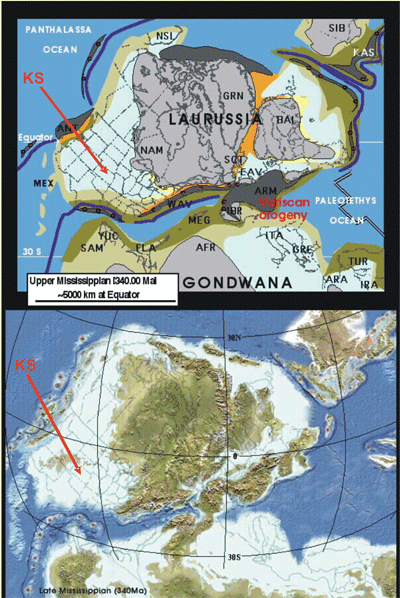 |
Map source: Blakey, Global Earth History Website |
Late Pennsylvanian Paleogeography
|
 |
Map source: Blakey, Global Earth History Website |
Sea-level History
Phanerozoic Sea Level Curve

Conceptual model of controls on Pennsylvanian cyclothem
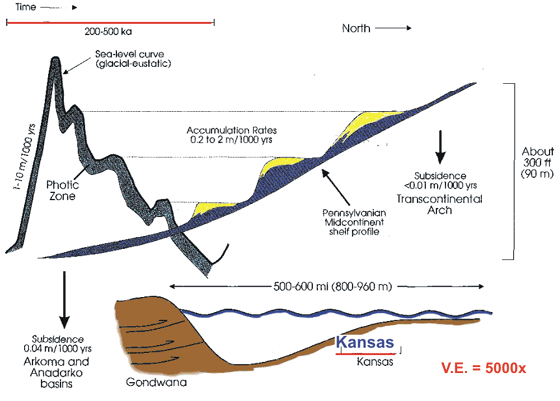
Conceptual facies model of typical Kansas cyclothem - Heckel (1977)
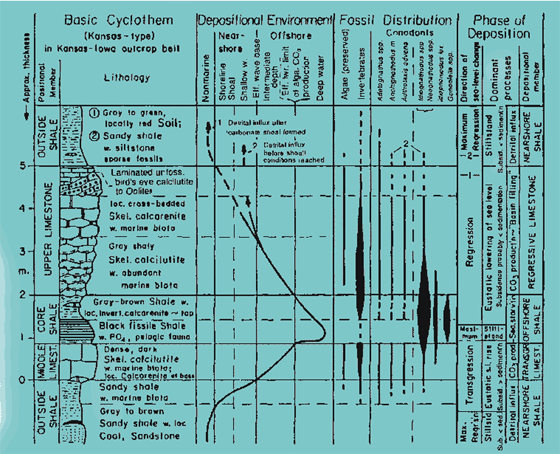
Onset of icehouse conditions started in lower Mississippian and continued through Pennsylvanian resulting in high-frequency sea-level oscillations.
Higher frequency cycles are evident in the Mississippian, believed to be in part related to an episode of glacial eustacy. The Pennsylvanian is prominently punctuated by high frequency and high magnitude, 4th order cycles, expressed by the carbonate-dominated “Kansas Cyclothem” of Heckel (1977). The interaction of subsidence and sea-level changes and stillstands led to complex stacking patterns and shoal development affecting the resultant geometries of these reservoirs across the upper Midcontinent shelf.
Depositional Environment
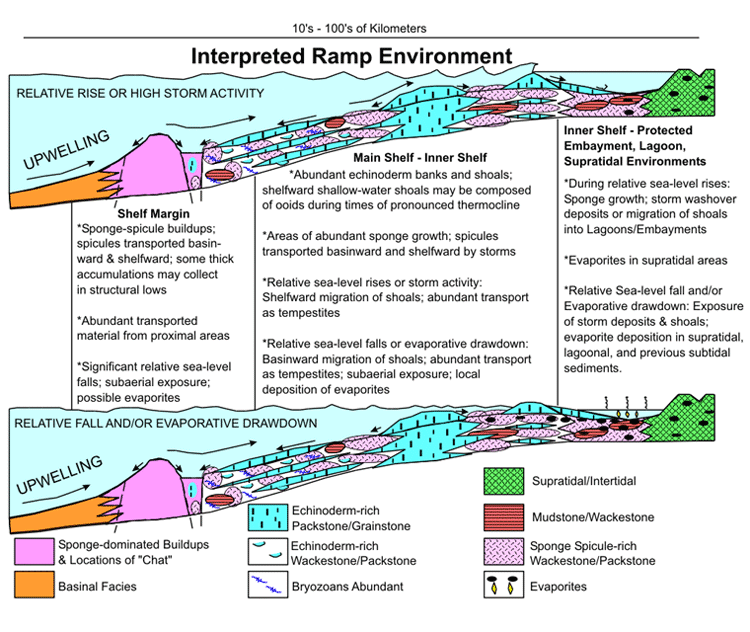
Mississippian (Osagean) dominated by heterozoan carbonates (e.g. echinoderms, bryozoa, gastropods, foraminifera, brachiopods, ostracods, solitary corals) and siliceous sponges, likely as a result of excess nutrients and silica supplied to the shelf through upwelling (see cartoon cross section). Facies are dolomitic, cherty dolomitic, and chert. The shelf margin is characterized by bedded chert thought to represent original sponge buildups that were later weathered to form the "Chat" reservoir facies (vuggy, porous, commonly permeable weathered chert). Favorable reservoir character in shelfal areas results from early dissolution and dolomitization.
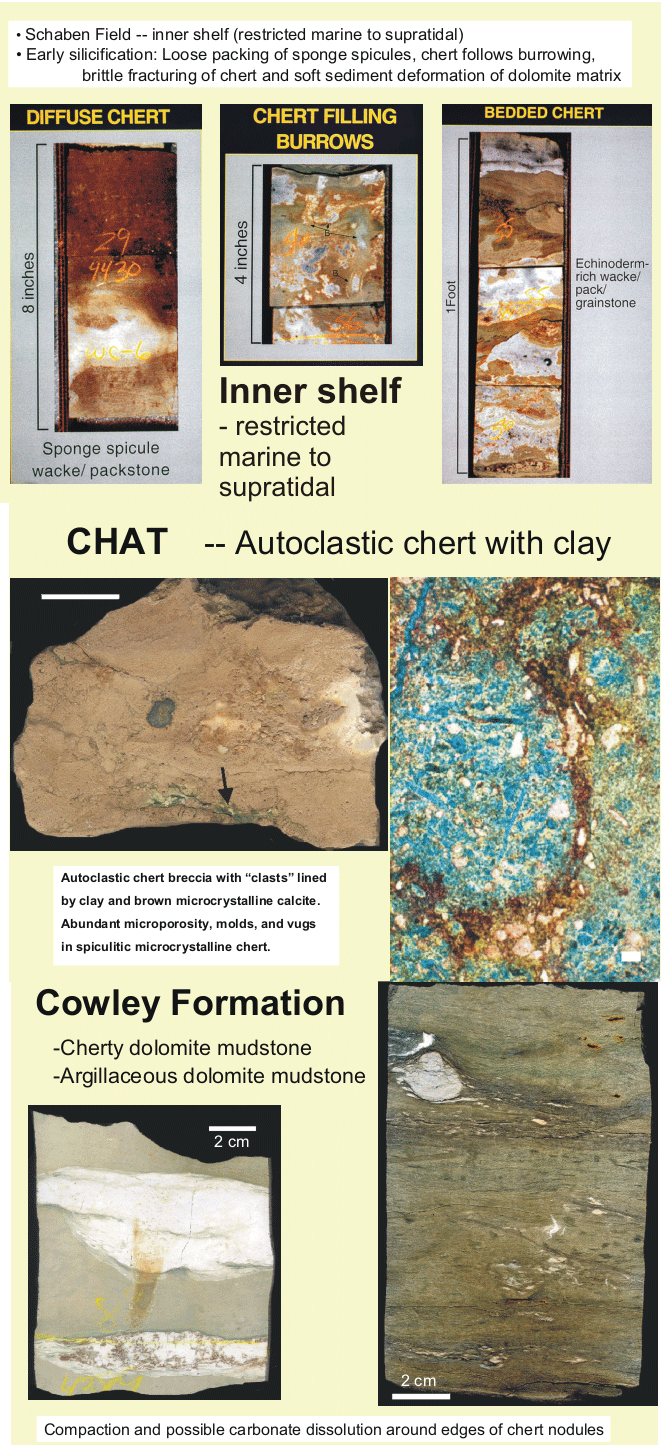
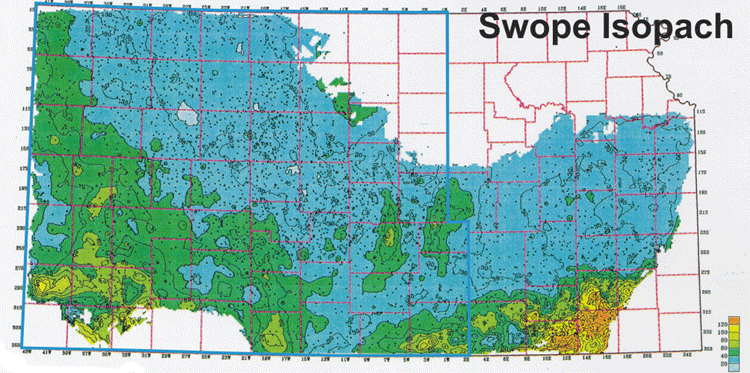
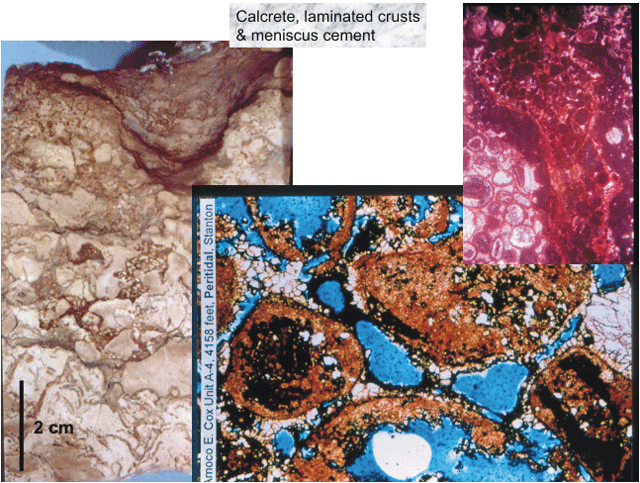
Pennsylvanian dominated by warm-water tropical photozoan carbonates, including abundant phylloid algal accumulations and extensive, repetitive accumulations of oolitic grainstones on the Midcontinent shelf areas. Sequences (cyclothems) on the shelf consist of alternating shale and carbonate reflecting pronounced, high-frequency sea-level changes. Periods of subaerial exposure contributed to reservoir enhancement (e.g. oomoldic pores commonly serve as the petroleum reservoir) and enhanced dissolution, crushing, or recrystallization were important for permeability.
http://www.kgs.ku.edu/PRS/AAPG2005/controls/p1-03.html
Last Modified January 2006